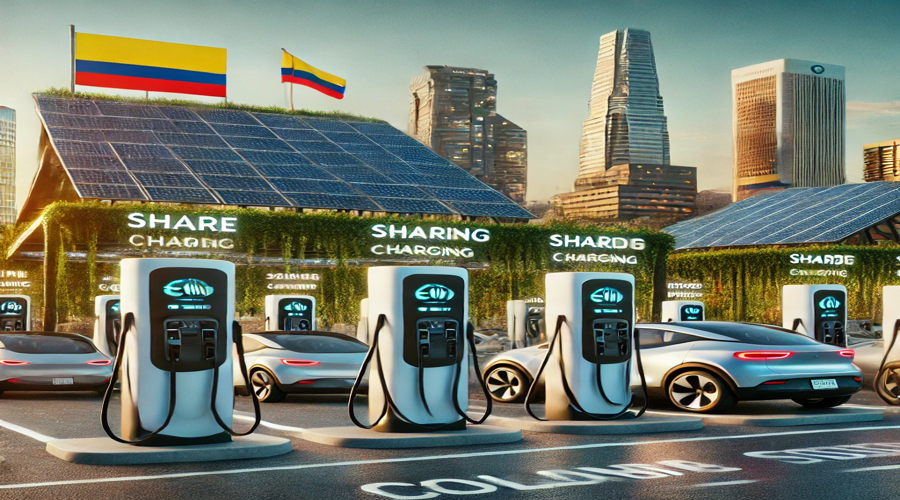Charging infrastructure in Colombia faces one of its biggest challenges: ensuring efficient and accessible coverage to accelerate the transition towards electric mobility.
To address this need, the National Charging Infrastructure Plan promotes the concept of shared charging, a model inspired by the collaborative economy, similar to platforms like Airbnb, which would allow the maximisation of private station usage by integrating them into a controlled access scheme for external users.
With this strategy, the country seeks to optimise investments in existing infrastructure, reducing costs and speeding up the deployment of chargers without the need for large initial outlays.
Below are three scenarios in which this model could establish itself as a viable alternative in the Colombian market.
How Would Shared Charging Work in Colombia?
1. Private Infrastructure with Public Access at Specific Times
Companies that own both electric fleets and charging infrastructure could benefit from this model by allowing external users access during off-peak hours.
In this way, infrastructure is used more efficiently, generating additional revenue and reducing the return on investment time.
This scheme not only facilitates the amortisation of operational costs but also contributes to the expansion of the charging ecosystem, allowing more electric vehicle drivers access to charging points without solely relying on new public stations.
2. Companies with Electric Fleets, but Without Their Own Charging Infrastructure
For companies that have adopted electric mobility but do not have their own charging stations, the shared charging strategy represents an efficient solution.
In this case, the company would access third-party infrastructure, reserving specific time slots at private stations.
This model minimises the initial investment and reduces the financial burden of fleet electrification.
Additionally, by increasing the demand for charging at existing stations, it creates a virtuous circle that encourages the construction of more charging points, strengthening the electromobility ecosystem in the country.
3. Access to Charging Stations Through Reservation Platforms
One of the most innovative proposals within this scheme is the implementation of digital reservation platforms, allowing users to schedule their charging sessions in advance and ensure availability at shared stations.
The integration of vehicle identification protocols and independent consumption measurement would facilitate the management of charging points, ensuring transparency and efficiency in their use.
Furthermore, offering preferential rates to regular users or those participating in agreements would strengthen the adoption of this model.
Despite the flexibility offered by this solution, it is crucial that the infrastructure retains its public nature, ensuring that individual users continue to have free access to charging without additional barriers.
What Are the Advantages of the Shared Charging Model?
Firstly, it would allow more efficient use of existing infrastructure, preventing charging stations from being inactive for long periods and thereby maximising investment in electric chargers.
Additionally, it would provide access to a larger number of users, allowing electric vehicle owners to not rely solely on the expansion of the public network and to utilise private stations during specific times.
Another key benefit of this model is financial sustainability for charging operators, as it would enable them to generate additional income through third-party access to their stations.
Furthermore, shared charging would offer greater flexibility in managing charging sessions, as users could plan and reserve their sessions in advance, reducing waiting times and improving service experience.
However, the implementation of this model also faces certain challenges that need to be addressed to ensure its success in the Colombian market.
One challenge is the need to establish a clear regulatory framework that defines the conditions for shared charging infrastructure use, including regulations on access and tariffs.
It is also essential to develop efficient demand management to avoid station overcrowding, which would involve the creation of reservation platforms and real-time monitoring systems.
Finally, it is emphasised that the quality of service must be guaranteed through standards that ensure the maintenance and proper functioning of shared charging stations.
For more news on electromobility in Latin America, visit Mobility Portal Latinoamérica







